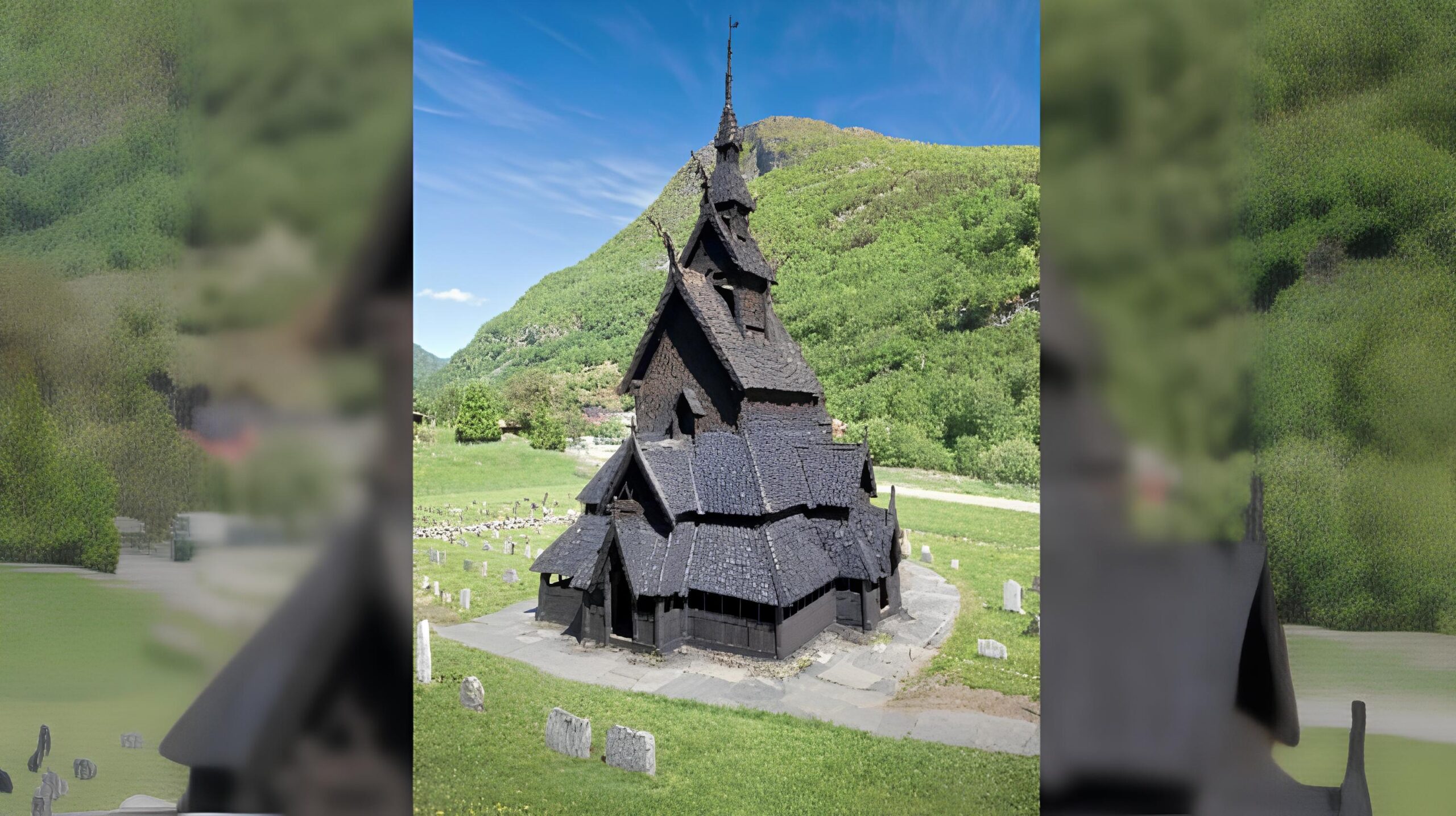The Borgund Stave Church, located in the centre of Norway, is one of the most spectacular works of mediaeval architecture in the world. This magnificent structure, created completely of wood without the use of nails, is a monument to the inventiveness and ability of the builders.
The Borgund Stave Church was constructed between 1180 and 1250 AD and is one of a collection of mediaeval churches found nearly entirely in Scandinavia. These buildings are known as stave churches because they are built using wooden posts or staves that are placed into the ground and then connected together to form the building’s structure.

The Borgund Stave Church is extremely unusual in that it was built without the use of nails or metal fasteners. Instead, a system of interlocking joints and wooden pegs were used to properly attach the wooden beams and posts together. This technique, known as timber framing, enabled the builders to construct a building that was sturdy, resilient, and resistant to the region’s harsh weather conditions.

The complex carvings and artistic components of the Borgund Stave Church are especially noteworthy. The church’s facade is ornamented with intricate sculptures of animals, mystical creatures, and biblical events. The church’s interior has a number of magnificent paintings and murals, as well as a large collection of mediaeval artefacts and holy relics.

Despite its antiquity, the Borgund Stave Church has been very well kept over time. The structure was rebuilt and reconstructed in 1877, and it is now a national monument and a UNESCO World Heritage Site. The church is still a significant cultural and historical site in Norway, attracting tourists from all over the world to marvel at its beauty and workmanship.

The Borgund Stave Church exemplifies the long-lasting heritage of mediaeval workmanship and architecture. It is a real wonder of the world because to its detailed carvings, magnificent paintings, and creative building techniques. Looking ahead, it is critical that we continue to maintain and safeguard structures like the Borgund Stave Church so that future generations can appreciate their beauty and significance.






